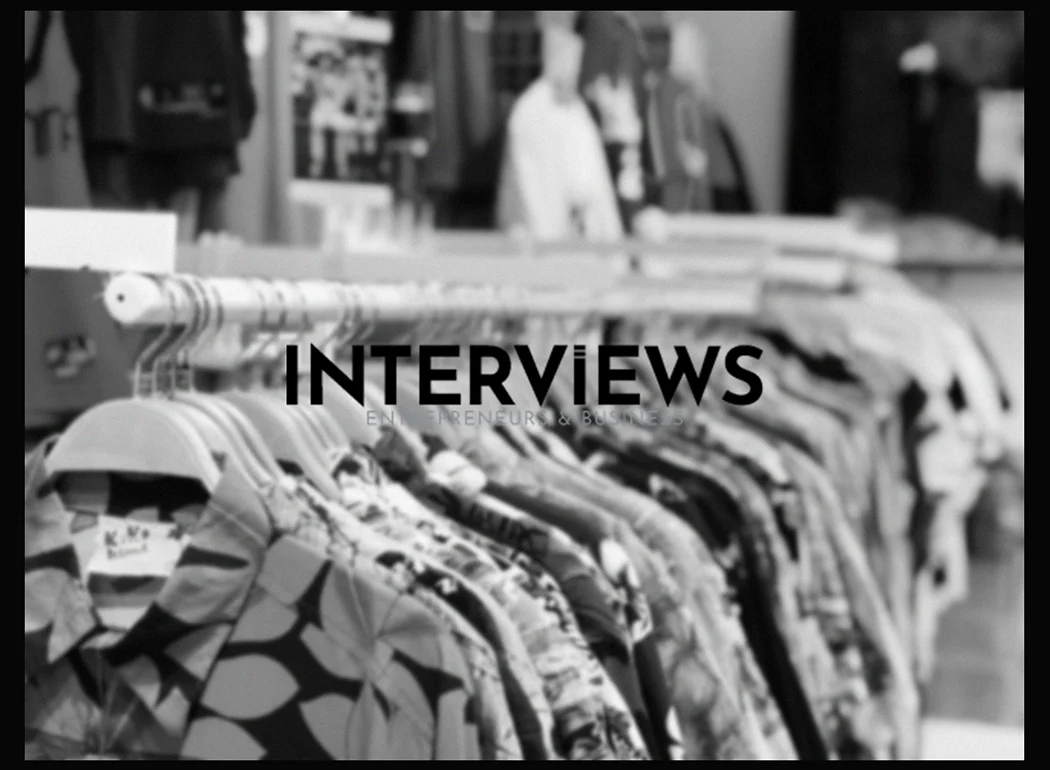So, You Want to Launch a Clothing Brand? Let’s Talk Dollars and Sense (and Maybe Some Fabric)
Thinking of entering fashion entrepreneurship? Hold on a minute. Before you imagine your designs on runways, let’s discuss money. More specifically, how much cash will you need to start this journey. It’s more than just a logo and fabric.
The Great Cost of Clothing: Initial Investment Breakdown
Launching a clothing brand involves varied financial requirements. Your investment depends on your goals, scale, and hustle level. Let’s explore initial investments based on size:
- Small-Scale/Print-on-Demand: A cost-effective option. Start from your couch with a laptop. You can begin with as low as $500, potentially less if creative. This model relies on online sales with little to no inventory. Ideal for testing waters without heavy costs.
- Medium-Scale: Ready for a bigger commitment? Budget $1,500 to $5,000. This allows more flexibility in production and marketing, moving beyond print-on-demand.
- Large-Scale: Big ambitions mean bigger budgets. Ready to invest tens of thousands? Expect costs for physical stores, inventory, and full production. It’s a long game financially.
Where Does All the Money Go? Key Cost Areas Unveiled
Wondering where your capital disappears? Here are the key expenses that will consume your startup funds:
Production: From Raw Materials to Ready-to-Wear
- Raw Materials: Fabric, zippers, buttons, everything involved. Quality and quantity here will shape your costs. Think silk vs. cotton – there’s a gap!
- Labor: Unless you will cut and sew all garments (impressive but requires time), labor for sewing is vital. Outsourcing means including that cost.
- Samples: Essential for testing designs and ensuring the fit. Sample costs are a must-have for maintaining quality.
Branding & Marketing: Making Some Noise (Stylishly)
- Logo Design & Website: Your brand’s online face. A professional logo and user-friendly website are crucial. First impressions count.
- Photography & Content: Bad product photos mean no sales. High-quality images and engaging content help capture attention and drive sales. Use visuals to your advantage.
- Marketing & Advertising: Spread your brand’s message. Advertising, social media promotions, influencer work – these are costly but can expand reach. Invest to grow.
Legal & Business: The Not-So-Fun But Essential Stuff
- Business Registration: Forming an LLC or similar? There are fees involved. Necessary to protect yourself legally.
- Trademark: Protecting your brand name is vital. Trademark registration isn’t free, but secures your brand’s future.
Operational Expenses: Keeping the Wheels Turning
- Website Hosting & Payment Processing: Keep your online shop operational. Hosting and payment fees are ongoing costs essential for e-commerce.
- Packaging & Shipping: Delivering your creations. Packaging and shipping costs add up quickly, especially if you offer free shipping.
- Warehousing & Inventory: Where will you store clothes? If not using print-on-demand only, space is necessary. Costs vary.
- Quality Control: Make sure garments are top-notch. Quality checks have costs, like your own time. Don’t skimp on quality assurance.
Other Considerations: The Wildcards
- Equipment: If producing yourself, sewing machines and heat presses come with significant upfront costs.
- Staff: Planning to hire? Staff expenses are substantial. Initially, you may do everything alone, but growing means hiring.
Reality Check: Realistic Cost Estimates for Different Ventures
Let’s talk numbers. Here are realistic cost ranges:
- Online Store: A purely online venture requires $5,800 to $17,000. This covers essentials to start up digitally.
- Retail Store: Dreaming of a physical store? Expect higher costs. Initial fees for a brick-and-mortar can range $64,500 to $131,300.
- Large-Size Clothing Line: Focusing on plus-size clothing? Expect costs between $25,000 to $50,000. Marketing and branding remain important.
- Complete Line with Moderate Production: Aiming for a more extensive collection? Budget $8,000 to $40,000. This allows more room for growth and experimentation.
- Starting a Clothing Brand in Rupees: For Indian entrepreneurs, starting could take around ₹5 lakh to ₹10 lakh. Watch for currency fluctuations and regional costs.
Navigating the Fashion Startup Jungle: Essential Steps to Launch Your Brand
If we set aside finances for a moment, launching a clothing brand requires more than money. Strategy, planning, and determination matter. Here are key steps to realize your fashion dreams.
Step 1: Crafting Your Business Blueprint – The Business Plan
A business plan acts as your roadmap. It keeps you focused and organized. Important elements to finalize:
- Define Your Brand’s USP and Values: What makes you unique? What value do you provide? Pinpoint your core values. Are you eco-friendly or luxury-focused? Identify your niche.
- Identify Your Target Market: Who are your designs for? Teenagers? Professionals? Eco-conscious consumers? Defining demographics helps inform design and marketing.
- Create a Business Model: How will you sell your clothes? Online store? Physical locations? Print-on-demand? Decide on your sales channels.
- Outline Financial Projections: Estimate your startup costs again. Project possible revenue – how will you earn income? Sales forecasts matter.
Step 2: Design and Development – From Sketchbook to Sewing Machine
This is where creativity shines! But creativity needs organization too. Focus on:
- Create Unique Designs: Develop a style that resonates with your audience and distinguishes you from others. Originality must reign in fashion.
- Source High-Quality Fabrics: Choose suitable fabrics for designs and market preferences. Quality matters. Ethical sourcing becomes more important for consumers.
- Consider Production Methods: Manufacturing yourself offers control but demands investment. Hiring manufacturers means vetting carefully. Print-on-demand minimizes inventory risk.
Step 3: Establishing Your Brand Identity – Beyond Just Clothes
Your brand is more than a logo; it represents your clothing’s essence. Focus on:
- Choose a Memorable Brand Name and Logo: Select a catchy name that fits your brand and is easy to say. Ensure it’s available as a domain and social media handle. Your logo should capture your essence.
- Develop a Consistent Brand Identity: Create visual styles that show values. This includes color schemes and typography. Determine brand voice—playful, sophisticated, or edgy?
- Build a Professional Website and Social Media Presence:Your website needs user-friendliness and visual appeal, representing your brand well.
- Make it appealing and easy to navigate. Be present on social media platforms where your target audience is. Engage with them instead of only broadcasting.
Step 4: Marketing Your Brand – Getting the Word Out (Stylishly)
Beautiful clothing alone won’t sell. Marketing is essential. Key tactics include:
- Social Media Marketing: Engage your target audience with content like style inspiration, product showcases, and behind-the-scenes glimpses. Run targeted ads for your ideal buyers.
- Build an Email List: Email marketing works well. Collect email addresses via website sign-ups and social media. Send newsletters with promotions, new arrivals, and tips to enhance customer relationships.
- Collaborate with Influencers: Work with fashion influencers or bloggers to promote your brand. Choose influencers whose style matches yours for authenticity.
- Public Relations (PR): Contact media, bloggers, and journalists for coverage. Press releases and product samples can create buzz for your brand.
Step 5: Legal and Business Foundations – The Unsung Heroes of Success
These aspects are critical. Don’t overlook them! Ensure you:
- Register Your Business: Choose a structure – sole proprietorship, LLC (Limited Liability Company), or corporation. Register with the proper authorities. An LLC offers liability protection.
- Obtain Licenses and Permits: Research and secure necessary licenses and permits to legally run your clothing business. Regulations change by location.
- Set Up a Payment System: Choose a reliable payment processor to accept payments securely online and/or in-person. Consider options like PayPal or Stripe.
- Consider Insurance: Protect your business. Purchase liability and property insurance. It’s a safety net you hope to never need, but you’ll appreciate having it.
LLC or Not to LLC? That is the Question
Let’s talk about business structures, focusing on the LLC – Limited Liability Company. Is it essential for your clothing brand? Let’s examine the pros and cons.
Why an LLC Might Be Your Stylish Sidekick
- Liability Protection: An LLC separates personal assets from business debts. If sued or in debt, your savings are protected. This peace of mind is valuable.
- Credibility and Professionalism: An LLC can enhance your brand’s credibility. Suppliers and customers respect formal businesses. It shows your commitment.
- Tax Benefits: LLCs offer tax flexibility. They can be taxed either as pass-through entities or corporations. Consult with a tax advisor for the best strategy.
- Ease of Operations: LLCs simplify bank account openings and finances. Separate accounts help in maintaining organization.
- Scalability: As you grow, an LLC provides a robust legal structure for expansion. It prepares you for legal challenges.
When Might an LLC Be Overkill?
- Small Side Hustle with Minimal Risk: Testing the waters with low risk? A sole proprietor setup might be enough. It means simpler setup and less paperwork.
- Initial Stages of Business: Start as a sole proprietor and switch to an LLC as you grow. No need to rush into an LLC without necessity.
- Low-Risk Ventures: If you have minimal personal assets and expect low liability risks, a sole proprietorship may work initially. Assess your risk level.
Key LLC Considerations: Do Your Homework
- Research Legal and Tax Implications: LLC laws vary by state. Consult a business attorney to understand your state’s requirements. Knowledge is essential.
- Develop a Business Plan: A business plan helps assess risk, growth potential, and needs. This informs your decision on the best structure.
- Consider Long-Term Goals: Think about future plans. Do you want investors or significant expansion? An LLC might benefit scalability and appeal.
- Trademark Considerations: Want to trademark your brand name? An LLC adds legal protection in conjunction with your trademark endeavors.
Building a Brand That’s More Than Just Clothes: It’s a Vibe
Creating a clothing brand goes beyond threads; it’s about narrative, identity, and emotional connections with the audience. Let’s discuss brand building beyond garments.
Laying the Foundation: Define Your Brand Identity
- Determine Your Brand’s Values: What do you stand for? What are the core values? Luxury? Sustainability? Define your brand’s essence and soul.
- Identify Your Target Audience: Refine your understanding of your ideal customer. Knowing them informs messaging, design, and marketing channels.
- Create a Compelling Brand Story: Share your brand’s origin. Connect through stories about the founder’s journey and passion for fashion.
Know Your Customer: Research Our Target Market
- Identify Needs, Habits, and Desires: What problems does your clothing solve? Understand your audience’s aspirations and fashion preferences.
- Understand Demographics and Psychographics: Go beyond demographics. Look into their values, lifestyles, interests, and online behaviors now.
- Analyze Competitors: See who competes for attention in your target market. Evaluate competitors’ strengths and weaknesses along with opportunities for your brand.
Crafting Your Voice: Develop Your Brand Tone
- Determine Your Brand’s Sound: Choose a tone – formal, playful, or authoritative. Your voice expresses your brand’s personality.
- Evoke Desired Feelings: What emotions do you wish to evoke? Confidence, joy, empowerment? Emotional connections drive loyalty.
Putting It All Together: Create a Brand Style Guide
- Document Visual Identity: Create a style guide that includes logo variations, color palettes, typography, and imagery style for consistency.
- Define Voice and Tone: Articulate your brand’s voice and tone for various contexts like social media and customer interactions.
- Ensure Consistency Across Platforms: Apply your brand style guide consistently across all platforms like the website and social media profiles.
Visual Assets: Design Your Logo and Brand Elements
- Create a Memorable Logo: Invest in professional logo design for recognition and memorability across sizes and platforms.
- Develop Icons, Patterns, and Imagery: Create brand assets that reinforce identity and can be used across various touchpoints for expression.
Brand Immersion: Apply Branding Across Your Business
- Use Style Guide for Marketing Materials: Refer to your style guide for all materials like banners and email templates for consistency.
- Create a Slogan or Tagline: A concise slogan encapsulates your brand’s essence and proposition. Taglines are branding in a nutshell.
Brand Longevity: Build and Maintain Your Brand
- Continuously Evaluate and Improve Strategy: Brand building requires regular evaluation. Review your brand strategy. Analyze performance metrics and adapt to market trends. Customer feedback is also important. Brand evolution is essential for success.
- Stay True to Values and Story: Adaptation matters. However, stick to your core values and brand story. Don’t follow every trend blindly. Maintain brand integrity. Authenticity fosters trust.
- Engage with Audience and Build Relationships: Branding involves two-way communication. Engage with your audience on social media. Respond to comments and messages. Foster community around your brand. Relationship marketing is effective.
- Monitor Brand Reputation and Address Feedback: Track brand mentions online. Monitor customer reviews actively. Address negative feedback promptly. Reputation management is crucial today.
Profitability and Budgetary Realities: The Bottom Line (Literally)
Let’s look at the finances and budget for a clothing brand.
- Profit Margins in Clothing Retail: Profit margins in clothing can vary. In retail, they typically range between 40% and 60%. This means you keep 40 to 60 cents for every dollar of sales as gross profit.
- Startup Budget Revisited: To start a clothing brand, you need at least ₹5 lakh to ₹10 lakh (Indian Rupees). This is about $6,000 to $12,000 USD. Currency rates can change.
- Average Income for Clothing Brand Owners: Owner income varies widely based on size and success. On average, expect an income of $30,000 to $120,000 annually. Some earn more; others earn less.
Legal Landscape: Navigating the Legalities of Fashion
Here are key legal aspects for clothing brand owners:
- Trademark: Protect your brand name and logo. A trademark prevents others from using similar marks in your industry. Trademark your assets.
- Copyright: Copyright protects original designs and creations. Understand how it applies to your designs and marketing materials. Protect your creativity.
- LLC (Again!): Forming an LLC provides liability protection. It affects your legal and tax structure. Consider this choice for your brand.
Beyond the Basics: Other Essential Considerations
Here are more essential tips for your clothing brand journey:
- Design and Development: Spend time designing a cohesive line. Source quality fabrics or design your own. Establish a reliable production process. Design is important.
- Trademarking Costs: Trademark registration costs $350 per class through the USPTO. This is a base fee per class. Plan for these trademark fees.
- Number of Designs to Start: You do not need many designs to begin. Start with 3 to 8 styles as a manageable approach. Quality is more important than quantity.
- Production Options: Explore various production methods. Consider hand production, partnering with manufacturers, or using print-on-demand services. Flexibility in production is vital.
- Design Alignment: Ensure designs align with your brand identity. They must resonate with your target market. Design with your audience in mind.
- E-commerce Platforms: Select an e-commerce platform for online sales. Consider options like Shopify and WooCommerce. The platform choice matters.
Starting a clothing brand is a long-term commitment. It requires passion, planning, persistence, and realistic cost awareness. With the right preparation, you might create a successful fashion brand. Good luck with your journey!





